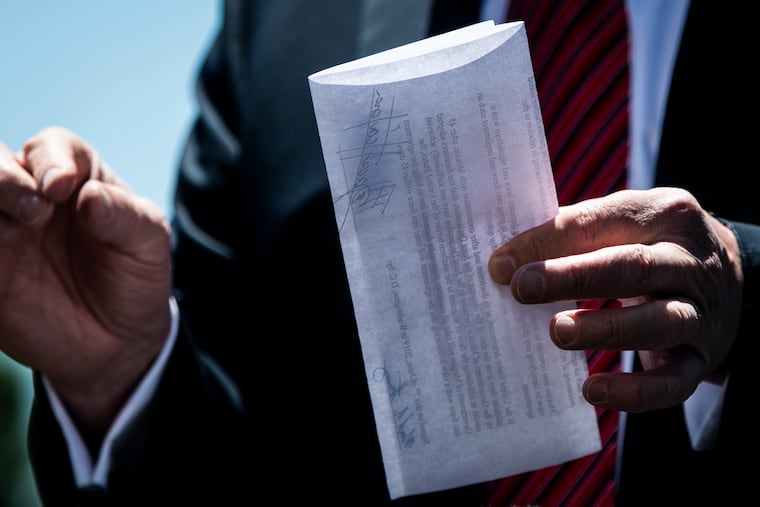A photographer snapped an image of Trump’s alleged Mexico deal. Here’s what it says.
Breaking down the text (that we can see) of the alleged agreement.

President Donald Trump has claimed for two days that he secured a secret immigration deal with Mexico — beyond the one announced Friday. But the White House has declined to disclose any details, and Mexico has denied that such a deal was reached. Confronted with understandable skepticism that such a deal exists, Trump produced a folded piece of paper from his breast pocket Tuesday.
And a particularly good photographer, The Washington Post's Jabin Botsford, snapped an image that reveals some of the document's contents. That image allows us to glean some clues.
The following is what I can make out of the text. Where I'm inferring a word or letters, I'll put it in parentheses:
A few observations:
The first question is obviously whether the document is legitimate. It is signed by two people, that we can see, with the one on the left apparently being an American signatory and the one on the right being a Mexican one. Neither of these signatures is from the countries’ respective presidents, top diplomats or ambassadors to the other country. (There could be other signatures that aren’t in view, along with the text of each names. The document appears to be folded in thirds, and the signatures appear to come before the fold that is two-thirds of the way through the document.)
The paper clearly deals with some kind of “burden-sharing,” apparently with regard to “refugees.” The prevailing wisdom is that Trump may have been referring to some kind of deal involving asylum rules, possibly a “safe third country agreement” in which Central Americans seeking asylum in the United States would be held in Mexico while their claims are processed (a controversial topic in Mexico). The Washington Post doesn’t generally refer to asylum seekers as “refugees,” but the concept is similar, so that makes some sense.
It’s not clear from the text what the agreement might entail beyond that — or if all the details have even been sorted out. The second paragraph sounds like standard language indicating that Mexico must determine which laws or regulations must be changed. The third paragraph suggests that this is something the United States can trigger after 45 days and that it would be up to the Mexican government to put it into effect in the next 45 days. This all tracks with Trump’s tweet suggesting the Mexican legislature would need to be consulted, which would make sense if this has to do with asylum rules.
The big question is what’s in the first visible paragraph that we can’t see, and what might come before it. It seems unlikely, given there is only one-third of a sheet of paper above that first visible paragraph, that there are extensive guidelines for what the deal entails. But there appears to be enough of an agreement that Mexico would immediately be put in the position of trying to implement it, rather than engage in further negotiations.